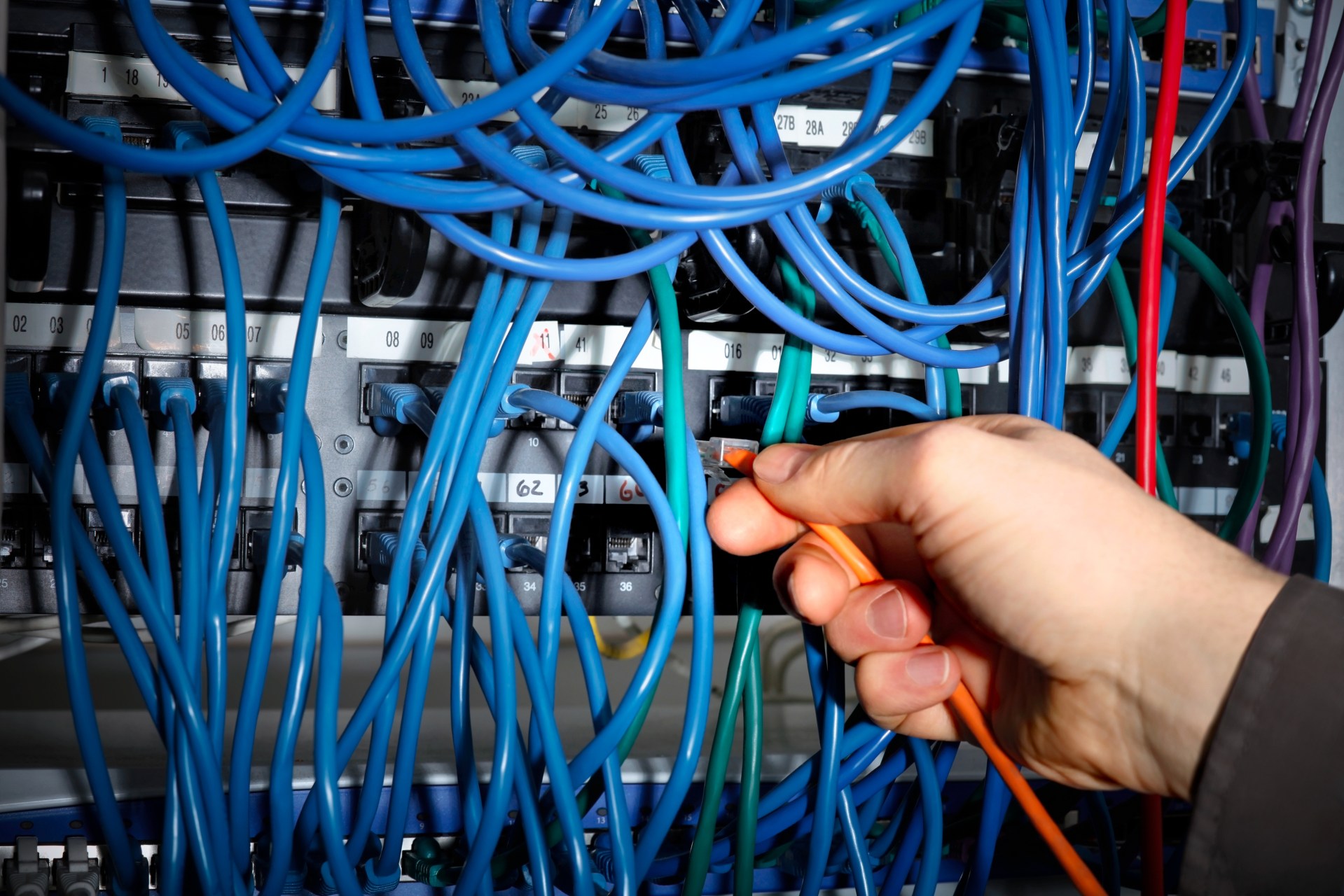Cross-connects are a fundamental and integral part of modern data center network infrastructure. They are an effective and affordable way of improving connectivity. Here is a quick guide to what you need to know about the use of cross-connects in colocation environments.
Definition and function of cross-connects
A cross-connect is a physical connection between two separate entities within a colocation facility. This direct connection bypasses the broader network infrastructure, offering a dedicated pathway for data transmission. By doing so, cross-connects eliminate the latency and potential bottlenecks associated with traditional network routing, ensuring swift and reliable communication between interconnected entities.
The key difference between cross-connects and traditional network connections is that cross-connects offer direct linkage between entities. By contrast, traditional network connections often involve a more complex routing through switches and routers.
By providing a direct physical connection, cross-connects enhance the overall performance and reliability of data transmission within colocation environments. This makes them indispensable components in the modern data center landscape. In particular, cross-connects are invaluable in use cases where low latency and high bandwidth are vital. This could include financial trading platforms or real-time data analytics.
Types of cross-connects
The three main types of cross-connects currently in use are patch cables, copper cross-connects, and fiber cross-connects. Here is a brief overview of each type.
Patch cables
Patch cables are short, flexible cables. They are designed for connecting various network devices, such as servers, switches, and routers. Within the context of cross-connects, patch cables act as the physical bridge that establishes the direct connection between two entities.
As patch cables are very flexible, they can be easily maneuvered within the confined spaces of data center racks. The pliability of these cables facilitates efficient cable management, ensuring neat and organized connections. The malleability of patch cables also makes it easy to modify the network infrastructure without disrupting the overall connectivity architecture.
Copper cross-connects
Before fiber-optic technology, copper cabling was the standard way of connecting network infrastructure. Copper cross-connects still offer many benefits. In particular, they offer an attractive combination of cost-effectiveness, ease of installation, and compatibility with existing infrastructure.
The reason copper cross-connects are very cost-effective is that they are durable, highly conductive, and very reliable. In particular, copper cross-connects are very resistant to electromagnetic interference. This makes them ideal for transmitting data reliably within the confines of a data center, especially for short-distance connections.
Fiber cross-connects
Fiber-optic cross-connects leverage the principles of total internal reflection to carry data in the form of pulses of light through strands of optical fibers. They offer a high-speed and high-bandwidth alternative to traditional copper-based connections.
The headline benefit of fiber-optic technology is that it offers significantly higher data transfer rates, enabling the transmission of large volumes of data at unparalleled speeds. Additionally, fiber-optic connections are immune to electromagnetic interference, ensuring a more reliable and secure data transmission environment.
The inherent low signal attenuation of optical fibers allows for longer-distance connections without sacrificing data integrity. Moreover, fiber cross-connects contribute to a reduction in signal loss, providing enhanced signal quality and minimizing the need for signal amplification.
Benefits and use cases of cross-connects in colocation environments
Here are the five main benefits and use cases of cross-connects in colocation environments.
Enhanced reliability
Cross-connects in colocation environments contribute to enhanced reliability by providing direct, point-to-point connections between network elements. This eliminates the need for data to traverse complex network routes, minimizing the risk of disruptions and potential points of failure. The localized nature of cross-connects ensures that data travels through dedicated pathways, reducing latency and enhancing overall network stability.
Scalability
Cross-connects facilitate the seamless integration of new servers, devices, or services without major disruptions. Their straightforward point-to-point connections simplify the process of extending the network. This ensures that scaling operations can be achieved swiftly and with minimal complexity.
Simplified network management
Cross-connects simplify the overall network architecture. This simplification minimizes the likelihood of configuration errors and reduces the time required for routine management tasks. It also means that centralized management tools can be leveraged more effectively, enhancing overall network visibility and control.
Improved performance
The dedicated pathways created by cross-connects ensure that data travels efficiently between interconnected devices, enhancing the overall responsiveness and speed of the network. This improvement in performance is particularly critical in latency-sensitive applications such as real-time data analytics, financial transactions, and high-performance computing.
Efficient resource utilization
Using cross-connects optimizes data pathways, reducing unnecessary load on network infrastructure. The elimination of convoluted routes ensures that bandwidth is utilized effectively, preventing bottlenecks and congestion. Cross-connects therefore enable precise control over data flow, allowing organizations to allocate resources based on real-time demands.




